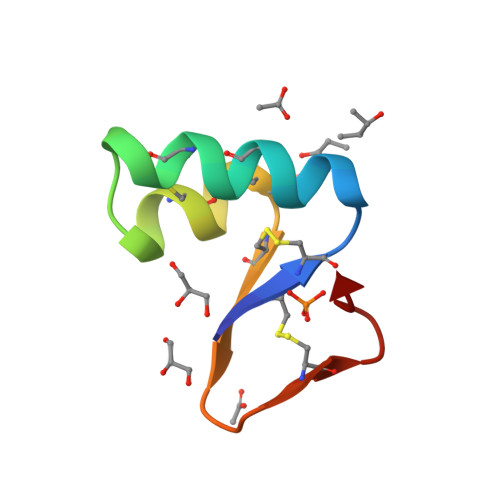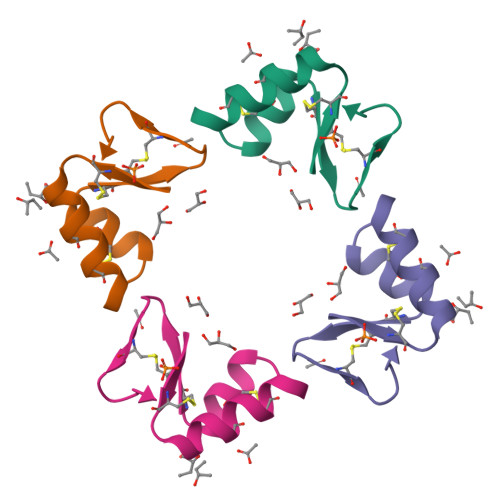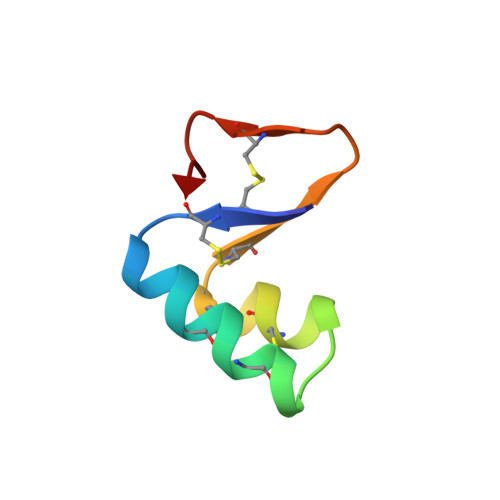Refinement of purothionins reveals solute particles important for lattice formation and toxicity. Part 1: alpha1-purothionin revisited.
Rao, U., Stec, B., Teeter, M.M.(1995) Acta Crystallogr D Biol Crystallogr 51: 904-913
- PubMed: 15299760
- DOI: https://doi.org/10.1107/S0907444995002964
- Primary Citation of Related Structures:
2PLH - PubMed Abstract:
The three-dimensional structure of alpha(1)-purothionin (alpha(1)-PT), a wheat-germ protein and a basic lytic toxin, was previously solved by molecular-replacement methods using an energy-minimized predicted model and refined to an R-factor of 21.6% [Teeter, Ma, Rao & Whitlow (1990). Proteins Struct. Funct. Genet. 8, 118-1321. Some deficiencies of the model motivated us to revisit the structure and to continue the refinement. Here we report a significantly improved structure refined to an R-factor of 15.5% with excellent geometry. The refinement of this relatively low resolution structure ( approximately 2.8 A) is well suited to test the limitations of classical methods of refinement and to address the problem of overfitting, The final structure contains 434 atoms including 330 protein atoms, 70 waters, three acetates, two glycerols, one sec-butanol and one phosphate. The key solute molecules (acetate ion and phosphate ion) play a crucial role in the lattice formation. Phosphate and glycerol found in the structure may be important for biological activity of the toxins.
Organizational Affiliation:
Department of Chemistry, Boston College, Chestnut Hill, MA 02167, USA.




















